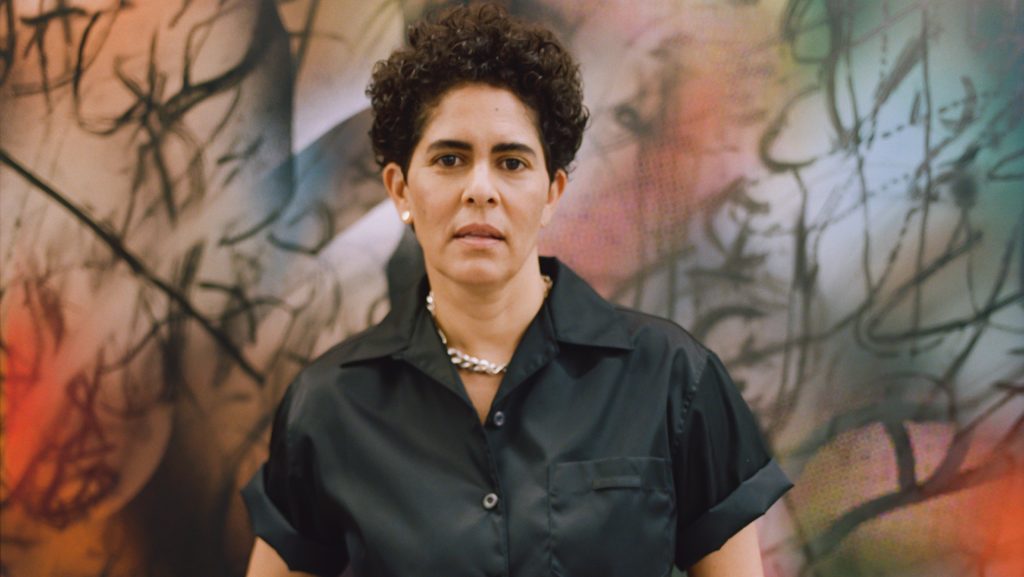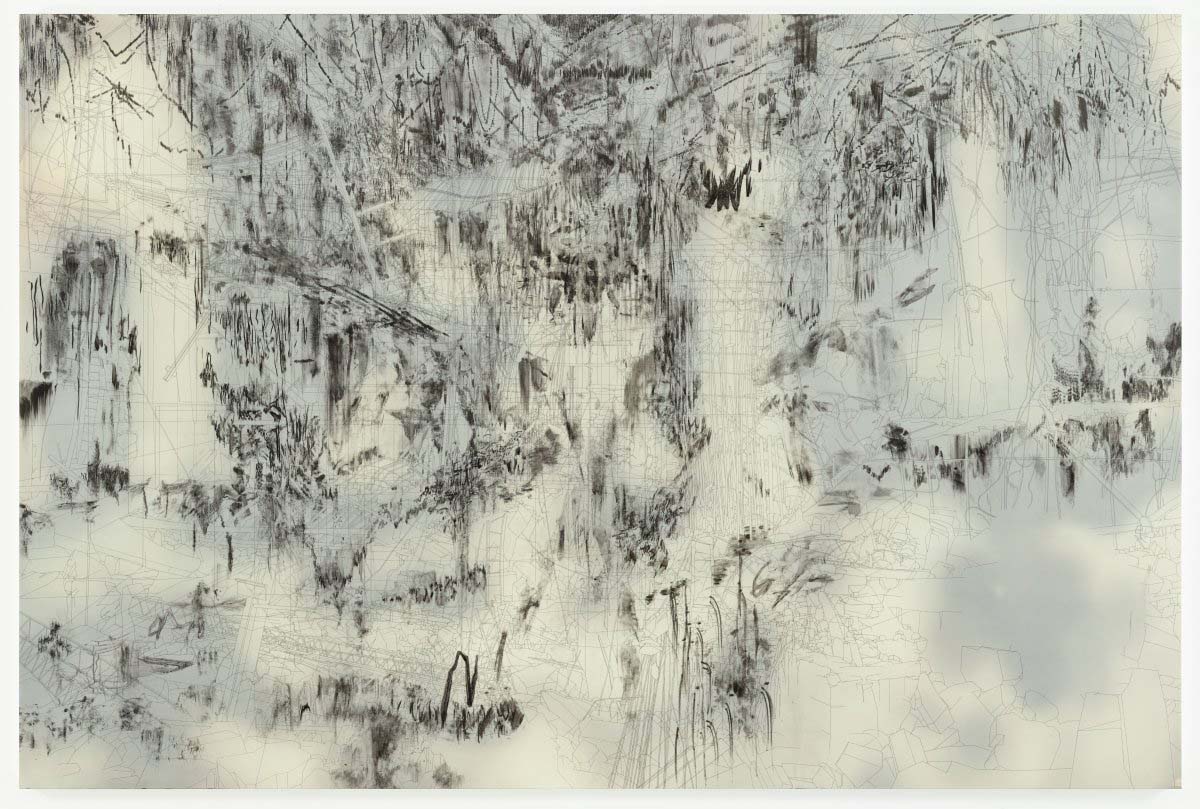
We could barely hold our enthusiasm for the upcoming exhibition at Palazzo Grassi, due to open on March 17. We had long been waiting for the modern art museum to re-open, and it will soon, with an exhibition co-curated by Mehretu herself and long-time resident curator Caroline Bourgeois.
The exhibition will include art by Mehretu and by artists who, over the years, befriended or influenced her. From Tacita Dean to Robin Coste Lewis, art will relate to poetry, sculpture, cinema, voice, music. Framing into the foreground the intellectual and emotional affinities and art production, the exhibition will paint the picture of a close-knit art community.
Born in Addis Abeba in 1970, Julie Mehretu fled Ethiopia with her parents at age seven to settle in Michigan. As an artist, she is known for her landscapes, mainly abstract and chaotically geometrical. Her art begins with a piece of news, especially stories of injustice and violence, which gets manipulated, digitally and on canvas, and the distorted, complicating recursively the image with traces and blotches of colour, erasures, changes, fractured phantasms, and imposing presences.

Mehretu’s art is sensual and emotional. It is full of traces and imaginative signs that emerge on a surface that is thick in complex, stratified ideas originating in tradition, history, and photography. Her references are a vast array of sources: art history, politics, geography, current news, private life. No matter the media of choice, the artist creates a web of meanings, makes different semantic levels coincide, and builds an elaboration that is visual as much as it is cultural. These superimpositions represent, in fact, the oppressive layers of life conditions on a conceptual level.
Julie Mehretu works on abstraction, though it is that kind of abstraction that doesn’t merely belong to the figurative-vs.-non-figurative field, but it is also an abstraction of thought, the search for bare ideas, for pure sign, a multitude of signs. Mehretu tears apart the raw scenes of daily life and frames them into a web of signs, lines, and colourless shapes, exacerbating the contrast between the fiction of the abstract sign and reality. The result is a unique space for emancipation, experimentation, and expression.